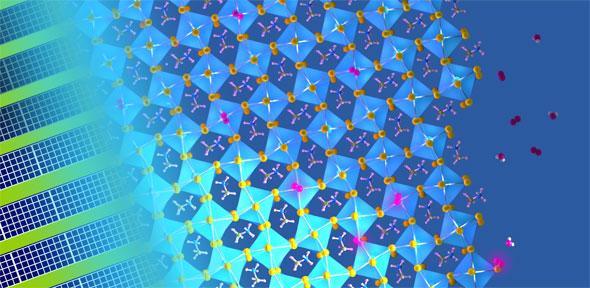
Researchers have shown that defects in the molecular structure of perovskites – a material which could revolutionise the solar cell industry – can be “healed” by exposing it to light and just the right amount of humidity.
The international team of researchers demonstrated in 2016 that defects in the crystalline structure of perovskites could be healed by exposing them to light, but the effects were temporary. Now, an expanded team, from Cambridge, MIT, Oxford, Bath and Delft, have shown that these defects can be permanently healed, which could further accelerate the development of cheap, high-performance perovskite-based solar cells that rival the efficiency of silicon. Their results are reported in the inaugural edition of the journal Joule, published by Cell Press.
Click here for the publication in Cell Press.
“In perovskite solar cells and LEDs, you tend to lose a lot of efficiency through defects,” said Dr Sam Stranks, who led the research while he was a Marie Curie Fellow jointly at MIT and Cambridge. “We want to know the origins of the defects so that we can eliminate them and make perovskites more efficient.”
In the new study, the team made a perovskite-based device, printed using techniques compatible with scalable roll-to-roll processes, but before the device was completed, they exposed it to light, oxygen and humidity. Perovskites often start to degrade when exposed to humidity, but the team found that when humidity levels were between 40 and 50 percent, and the exposure was limited to 30 minutes, degradation did not occur. Once the exposure was complete, the remaining layers were deposited to finish the device.
Click here to read the full article.
Image credit: Dr Matthew T Klug

